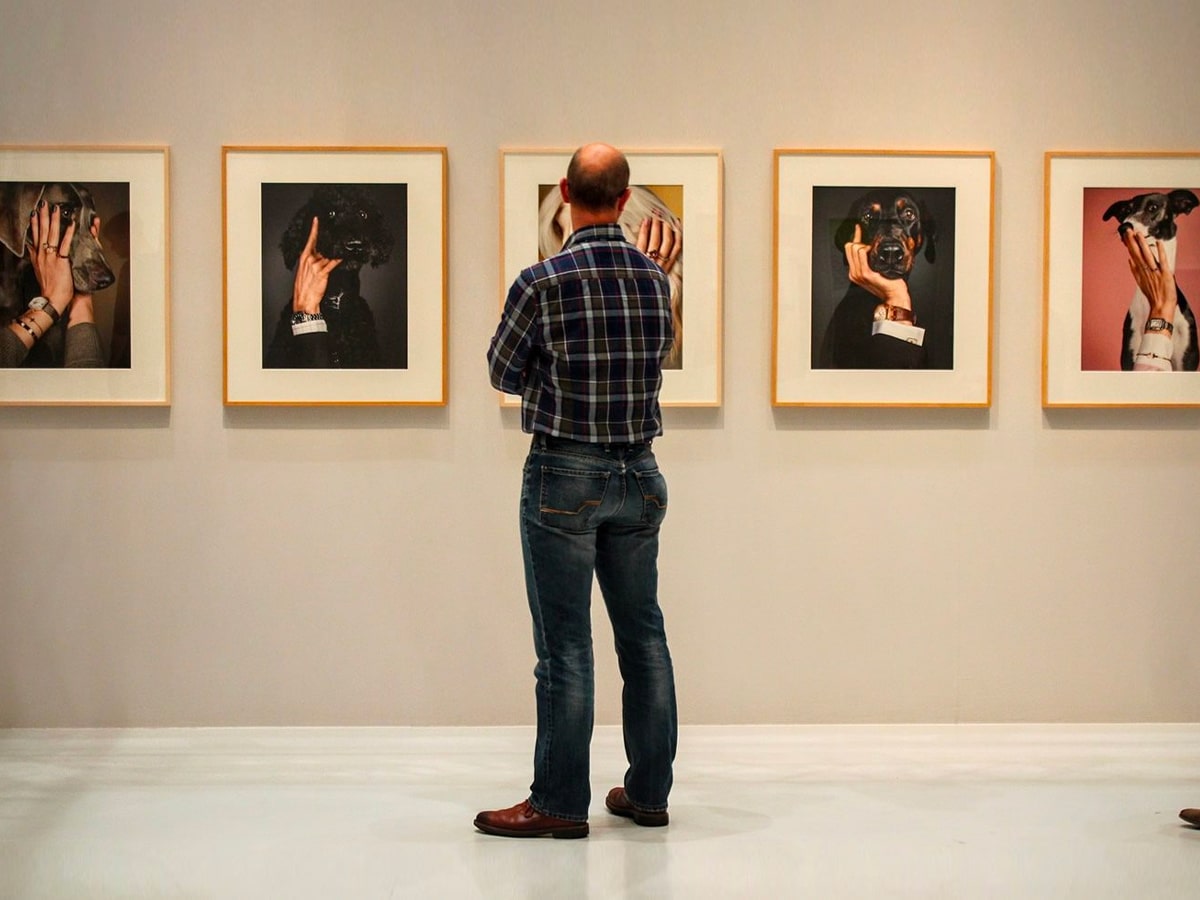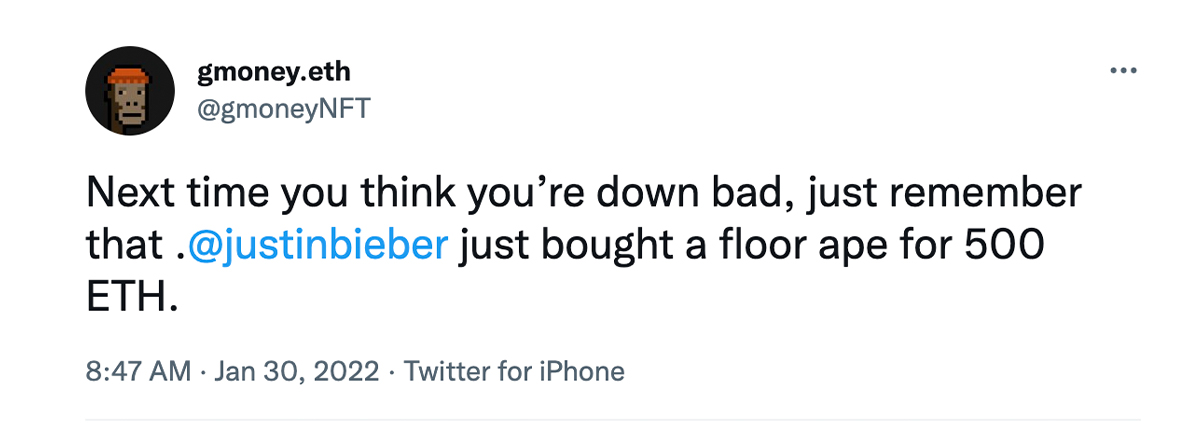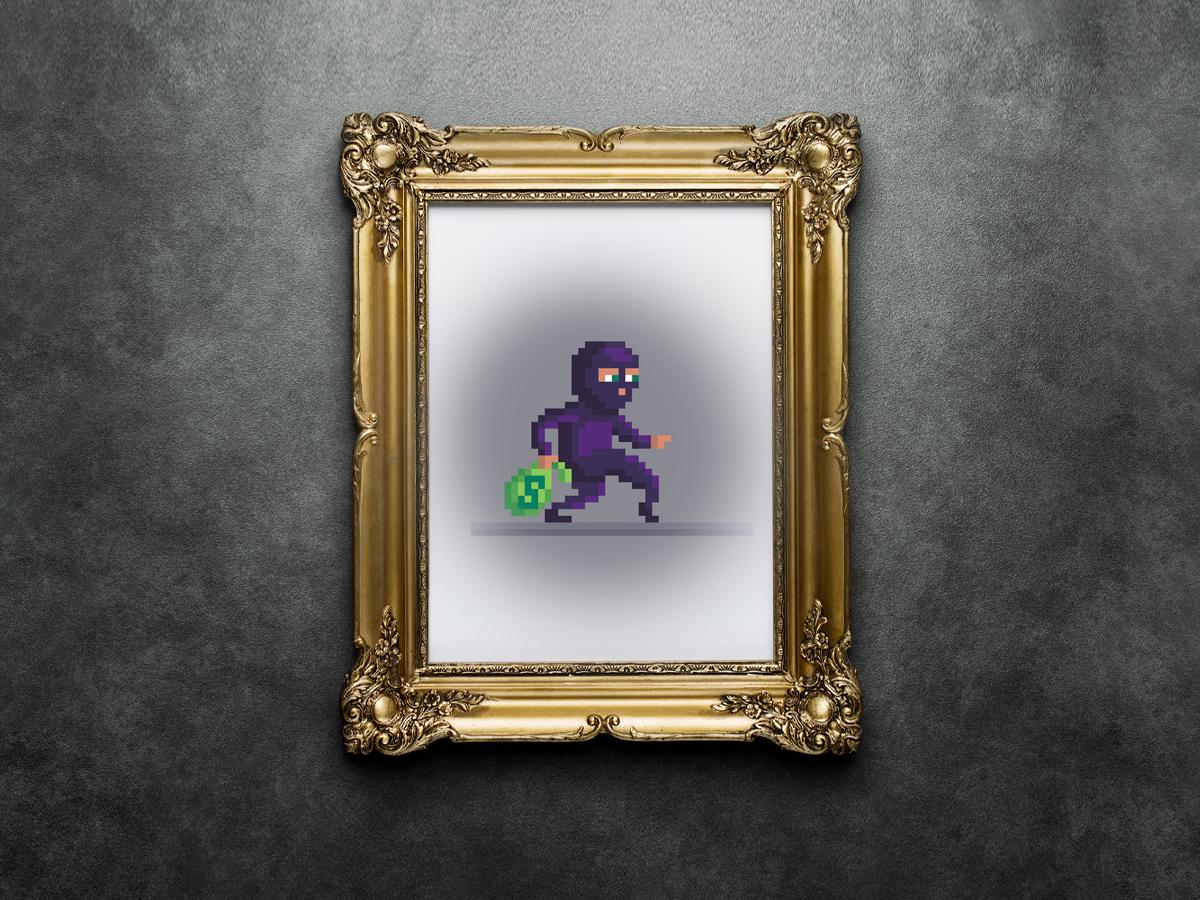
Published: Last Updated:
Readtime: 11 min
Every product is carefully selected by our editors and experts. If you buy from a link, we may earn a commission. Learn more. For more information on how we test products, click here.
They boast harmonious communities and an eye-watering amount of financial backing, but the viability of Non-Fungible Tokens (NFTs) is increasingly being thrown under scrutiny. Despite a bevy of fashion futurologists and tech giants champing at the bit to take their work into the digital universe, not everyone is convinced. And for good reason. OpenSea, one of the largest online NFT marketplaces announced last week that around 80 per cent of the NFTs minted through its free creation tool had been identified as fraudulent, earmarked as either spam or scams. Considering the influx of horror stories that have emerged in recent months, it’s hard to argue with the platform’s assessment, but there may be more to the story than just a few bad eggs.
The OpenSea Dilemma
Over the past 12 months, NFTs have transitioned from niche digital artworks to a burgeoning community of creators, an evolution that has birthed global appeal. It’s become almost fashionable for big-name brands to release an NFT component to their offering, showcasing their commitment to an engaged community, but also providing a handy plug of their digital credentials. However, while many investors, creators and brands have managed to traverse the NFT plain with ease, there have been whispers of malicious undertakings circling the outer reaches of the community. It wasn’t until OpenSea announced it was reversing an earlier decision to limit free NFT minting that the floodgates officially opened. Crypto fans were furious over the initial restrictions, but OpenSea’s move didn’t come without thought.
“Every decision we make, we make with our creators in mind. We originally built our shared storefront contract to make it easy for creators to onboard into the space,” OpenSea said. “However, we’ve recently seen misuse of this feature increase exponentially. Over 80 per cent of the items created with this tool were plagiarized works, fake collections, and spam.”
The uproar from the NFT community may have caused headaches for OpenSea, but it pales in comparison to the legal nightmare that could emerge for the wider industry. Over the past few months, allegations of wrong-doing have been drip-fed into public eye, muddying the digital innovation’s public perception. Several artists have criticised the practice, claiming that NFT creators have stolen their work for mass gain. Even Wikipedia got in on the act, refusing to acknowledge the practice as ‘art’ under its guidelines.

Life Intimating Art
Take Aja Trier, for example. The San Antonio-based painter told NBC News that her career had evolved in a way she never expected, courtesy of an NFT cash grab. After years spent carving out a reputation in the local art world, Trier was horrified to find tens of thousands of listings of her work up for sale on OpenSea, all procured without her permission.
“They just kept taking and remaking them as NFTs,” Trier said. “It’s so flagrant. And if it happens to me, it can happen to anyone.”
Trier’s story isn’t uncommon, and while that should be cause for concern, it only represents one side of a developing issue, one that appears to be festering from the inside-out. In September last year, OpenSea’s own head of product, Nate Chastain, resigned following allegations of exploiting information to make a profit. The senior staff member was reportedly caught using a secret Ethereum wallet to purchase front page NFT releases before they were published to the public, suggesting insider trader concerns.
For the NFT community, the recent revelations place them in an interesting position. Some artists have been able to finally make a substantial living from their work by replicating pieces in the digital space, and in a sense, the open nature has helped to spread awareness and build exposure. Where the challenges lie are, much like cryptocurrency, in regulation.
Many analysts, including attorney and lobbyist Makan Delrahim, have previously advocated for crypto market regulation in an attempt to reduce fraudulent activity, but it goes against the very reason crypto was invented. The decentralised nature of the currency was initially designed as a selling point, and NFT’s concept of ‘Tokenizing’ real-world tangible assets was originally seen to reduce the probability of fraud. For artists and those unlucky enough to fall for scam projects, the ethos hasn’t translated entirely.

Are NFTs Scams?
Like many things, it would be an ill-advised generalisation to label all NFT projects as scams. What must be noted, however, is that the relatively new framework upon which the digital artwork practice is built lends itself well to fraudulent activity. According to Josh Gilbert, finance expert and market analyst for global multi-asset investment platform eToro, the risks associated with NFTs follow a familiar pattern.
“Scams are not unique to NFTs, we see them in most areas of financial services, and many other parts of life. Unfortunately, there will always be people looking to take advantage of new trends and emerging technologies,” Gilbert says. “It goes without saying that they are casting a negative light on the space. However, I don’t believe it jeopardises all NFT projects since NFTs are transforming industries and will have a profound impact on creators, collectors and brands.”
Taking advantage of inexperienced investors is not a new premise. The challenge for those looking to get into NFTs is being able to understand the validity of the project, which is not always straightforward. NFT novices are less inclined to dive into a project’s lineage, making them an easy target for dodgy operators to exploit. John Hawkins, senior lecturer at the Canberra School of Politics, Economics and Society and NATSEM said that while not illegal, many fraudulent NFT marketing ventures have some similarities with Ponzi schemes.
“Cryptocurrency markets work in essentially the same manner. For existing investors to profit, new buyers have to be drawn into the market. So too NFTs, with something illusory attached to the digital assets,” Hawkins said. “There’s virtually nothing humans can’t turn into a market. But increasingly there are speculative bubbles in things with absolutely no fundamental value. NFTs have joined Bitcoin and celebrity meme-based cryptocurrencies such as Dogecoin and Shiba Inu as examples of tokens with no intrinsic worth, which speculators just buy in the hope the price will keep rising.
Like all modern art, NFTs boast an interesting dichotomy of ideas that can be exploited for financial or more importantly, social value. In a piece published in The Conversation, Hawkins notes the innovative approach of renowned artist and master self-promoter Damien Hirst.
“Some light on the worth of this attachment compared to the economics of NFTs themselves may come from the interesting (and also highly profitable) experiment by the (now not so) “young British artist” Damien Hirst – himself a master self-promoter,” Hawkins wrote. “Hirst’s well-publicised “The Currency” project has involved selling NFTs for 10,000 similar but unique dot paintings. The twist is that at the end of a 12-month period those who have bought the NFT must decide if they want the digital token or the physical artwork. If they keep the NFT the artwork will be destroyed.”
How to Identify an NFT Scam
So, how do you identify an NFT scam? As with any financial decision, prospective investors should do a lot of research before getting started, not just on their desired project, but on the NFT industry as a whole. According to investment expert Gilbert, taking a look at the roadmap, who is behind the project and what are the creators’ backstories are good places to start. Most importantly, consider if the community that supports the project is comprised of legit NFT collectors or at least in part.
Examine the history and wallet records of any project that grabs your attention. This is when blockchain’s transparency comes in handy. With EtherScan, you can view all of a wallet’s transactions on the Ethereum Blockchain,” he explains. Avoid clicking on broken links from social media, DMs from unrecognisable Discord users, and don’t interact with cold messages and emails. If it seems too good to be true, it often is. Most importantly, never give away your seed phrase or private key to your crypto wallet to anyone. New users might not know how important this is, but anybody can enter your wallet with this information.”
Coming a cropper to an NFT scam isn’t uncommon, however, some projects are inherently riskier than others. Even Justin Bieber was caught in hot water this week, after spending 500 ethereum (around USD$1.29 million) on a ‘lonely’ Bored Ape Yacht Club NFT. While not a fraudulent or scam project, the simple fact that the 27-year-old Canadian popstar was willing to drop seven figures on a JPEG which was reportedly only worth 104 ether or USD$208,237 caught the ire of the internet.
“It’s always a good idea to check out an NFT project on social channels such as Twitter and Discord. A strong community is required for a project to be long-lasting and successful. This also lets you see what other people are saying about the project,” Gilbert says.

What Happens If You Get Scammed?
Should you inadvertently find yourself in the midst of an NFT dilemma, the avenues to escape unscathed are relatively scarce. You can often report scams or fraudulent content to marketplaces which will help remove these types of projects, but these marketplaces are self-serve, peer-to-peer, meaning anyone can create and sell. What is of concern is that there is currently no way for investors to recoup funds, should things go awry.
“Unfortunately, no. DeFi is empowering users to own their own “bank account”, free from manipulation and censorship. But with that comes a level of responsibility, to be vigilant and handle your digital property with care and diligence. We advise users to keep educating themselves on the best practices to keep safe,” Gilbert says. “Ultimately, like most scams these days they are pretty sophisticated, which is why it’s important to make sure to do as much research as you can and ensure the marketplace and project you’re buying from is verified.”
What’s Next
Unfortunately, as Gilbert explains, scams are part and parcel of new technologies. Recency bias may prompt more inexperienced investors to get involved, which ultimately opens the opportunity for dodgy practices to take hold, but it’s not unique to NFTs. In essence, Gilbert believes these projects face similar challenges to traditional financial investments, albeit with heightened concerns from new traders.
“Whilst the levels of scams reported may surprise many people, if you’re already in the NFT space, this isn’t breaking news, and most people are aware of the number of ‘bad actors’ in the space,” he says. “Nevertheless, it may make newcomers nervous, and like with any investment, investors should do their research and only invest what they can afford to lose.”
For now, the NFT market remains unregulated and in an interesting, albeit familiar position. Much like cryptocurrency, the market appears to be heavily influenced by the advocacy of celebrities or the status attached to potentially artificial scarcity. Whether NFTs continue to rise in interest, similar to its digital currency sibling, remains to be seen and Hawkins warns the future is an uncertain beast.
“We now appear to be in the monster of all speculative bubbles. The creators of assets like NFTs will do well. It is not so clear about the holders,” the economic expert wrote. Nor will the impact of NFT crashes be restricted just to the NFT market. Speculators, particularly if they have borrowed heavily, may need to liquidate other assets as well. This is all likely to make all financial markets more volatile. The larger the bubble becomes, the wider the contagion when it bursts.”
General FAQs
While not all NFT projects are scams, there has been a recent rise in fraudulent projects. Platform OpenSea revealed that around 80 per cent of the NFTs minted through its free creation tool had been identified as fraudulent, earmarked as either spam or scams. The best way to ensure your NFT is legitimate is to Look for the blue check mark next to the artist’s profile picture on OpenSea or other NFT marketplaces. If there is none, find the artist on Twitter or through their website or other social media channels. Ask them directly if the artwork you want to buy is theirs, and if you have the right user profile, according to CoinDesk.
NFTs are unique cryptographic tokens that exist on a blockchain and cannot be replicated. NFTs can be used to represent real-world items like artwork and real-estate. In its initial stages, tokenizing tangible assets allowed them to be bought, sold, and traded more efficiently.




























